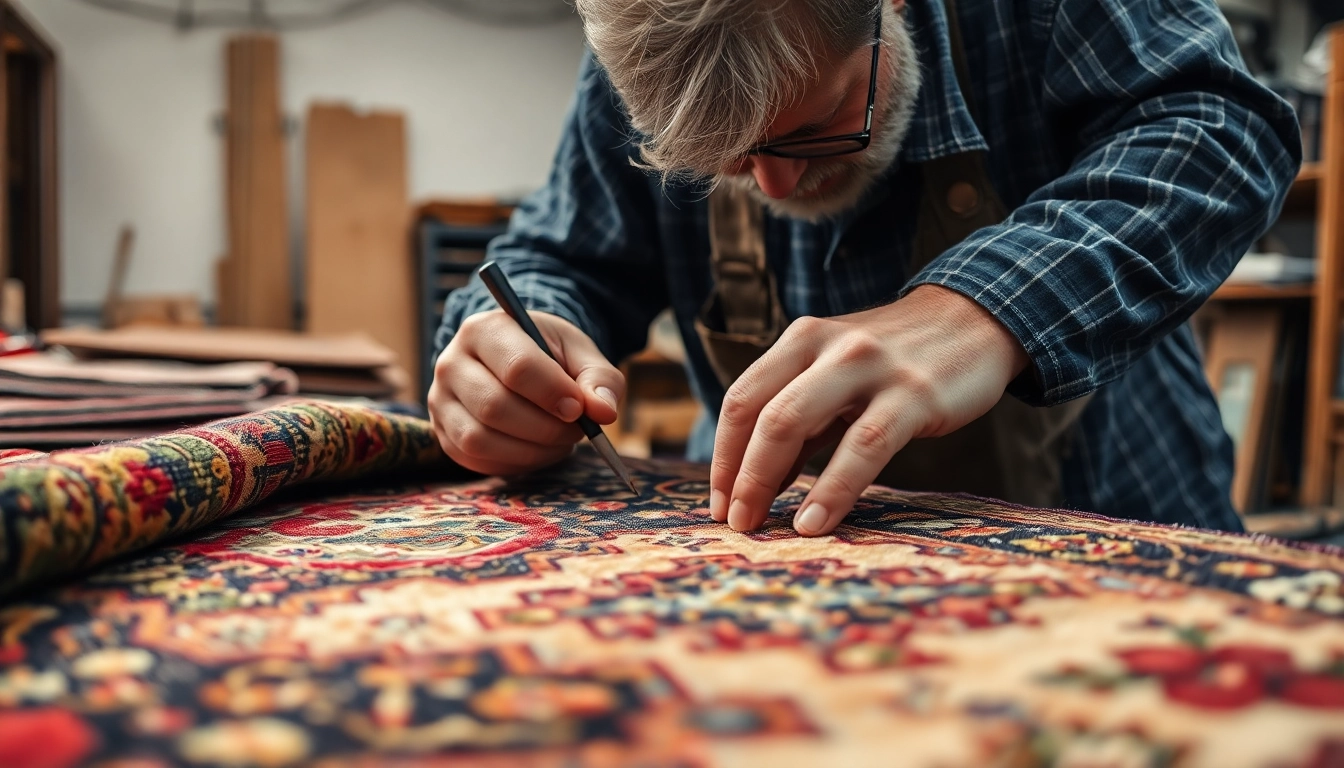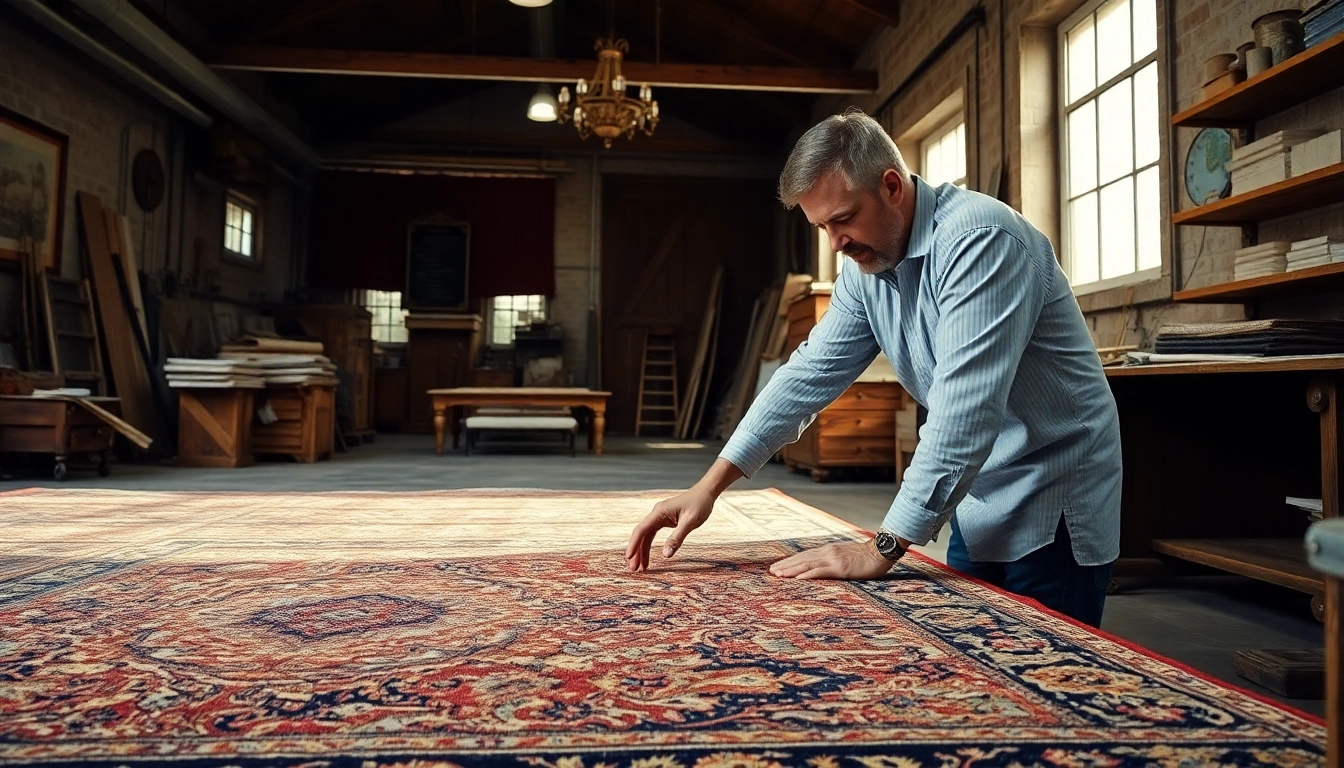Understanding the Importance of Restauro Tappeti Milano
1.1 What Is Restauro Tappeti and Why It Matters
Restauro Tappeti, or rug restoration, is a specialized craft dedicated to repairing, conserving, and revitalizing both antique and modern carpets. In the vibrant city of Milan, where cultural heritage and contemporary design intersect, maintaining the integrity and beauty of valuable rugs is essential. Restauro services ensure that delicate fibers, intricate patterns, and historical significance are preserved for future generations. Whether restoring a centuries-old Persian masterpiece or revitalizing a modern piece damaged by everyday wear, professional restoration extends a rug’s lifespan, enhances its aesthetic appeal, and preserves its cultural value.
Engaging in professional Restauro Tappeti milano services is not merely about cleaning; it is a precise process rooted in craftsmanship, knowledge of materials, and understanding of the rug’s origin. This expertise guarantees that repairs do not compromise the authenticity or integrity of the piece, allowing homeowners and collectors to enjoy their investments with confidence.
1.2 Common Damages in Antique and Modern Tappeti
Tappeti are susceptible to various forms of damage depending on their age, exposure, and usage. Common issues include fading of colors caused by sunlight exposure, fraying or unraveling of fringes, holes from pests or accidents, stains from spills or pet accidents, and structural weaknesses from accumulated dirt and improper handling. Antique rugs are particularly vulnerable, as their fibers have endured decades or centuries, often requiring meticulous restoration to prevent further deterioration.
Modern rugs, while often more resilient, are not immune. They can suffer from machine-inherent flaws, burns, or accidental tears. Identifying the type and extent of damage is crucial to selecting the appropriate restoration techniques. For instance, nerve damage to the foundation may require reweaving, while surface stains may be addressed through specialized cleaning and color correction.
1.3 Benefits of Professional Restauro Services
Opting for expert restauro services offers multiple advantages. Primarily, it ensures the use of appropriate techniques tailored to each rug’s specific needs, which minimizes further damage. Professionals utilize high-quality materials and advanced tools to restore fibers, colors, and structure accurately. Additionally, they can often identify underlying issues not immediately visible, preventing costly future repairs.
From increasing the aesthetic appeal to protecting financial investments, professional restoration adds value to rugs. Moreover, it helps maintain cultural and historical authenticity—crucial for antiques—and provides peace of mind through guarantees on work performed.
Techniques and Methods Used in Tappeti Restoration
2.1 Traditional Persian and Oriental Restauro Methods
Traditional methods trace back centuries and are rooted in artisanal craftsmanship. Skilled artisans employ hand-woven techniques, closely matching original knotting patterns, colors, and fibers. When restoring antique Persian or Oriental carpets, restorers often reweave damaged areas with new threads that blend seamlessly into the original design, maintaining authenticity. Hand cleaning, local dyeing, and repairing frayed fringes are common practices.
These techniques require deep expertise and patience, often involving the use of natural dyes, specialized needles, and tailored stitching. Such meticulous work ensures the restored area remains indistinguishable from the original, preserving both aesthetic and historical value.
2.2 Modern Restauro Technologies and Tools
Contemporary restoration benefits from advanced technology, including laser cleaning systems, UV light analysis, and computerized color matching. These tools enhance accuracy and efficiency, especially when dealing with stubborn stains, faded colors, or structural damage. Modern techniques allow restorers to reinforce weak foundation fibers with synthetic or natural threads, utilize heat-sealing methods for small tears, and apply color restoration that matches original hues precisely.
Digital imaging and 3D modeling are increasingly used for planning restorations, especially on complex or heavily damaged pieces. These innovations enable precise intervention, reducing guesswork and preserving the rug’s original appearance with minimal invasiveness.
2.3 Customizing Restauro Approaches for Different Tappeti
Not all rugs require the same restoration process. Antique rugs with high cultural value demand conservative, artisan-driven techniques, prioritizing authenticity. Conversely, modern rugs or those with structural issues may benefit from reinforced stitching, synthetic dyeing, or chemical treatments that improve durability.
Customization involves evaluating materials, damage types, age, and usage, then devising a tailored restoration plan. For example, a vintage Persian rug with faded colors might need gentle dyeing, while a contemporary piece with fraying edges could require reinforcement. This tailored approach ensures optimal results while respecting the unique characteristics of each rug.
Choosing the Right Restauro Tappeti Milano Provider
3.1 Key Factors: Experience, Certification, Reputation
Selecting a reputable provider is critical to achieving quality restoration. Look for companies with extensive experience, especially in handling antique and high-value rugs. Certifications from recognized textile and restoration institutes demonstrate adherence to industry standards. Reputation, built through testimonials and case studies, reflects consistent delivery of superior results. For example, companies like Persia&Tappeti and Babaei Carpets have over 20 years of specialization in the Milan area, ensuring trusted expertise.
3.2 Questions to Ask Before Service Approval
Before proceeding, inquire about the specific restoration techniques, materials used, and the estimated timeline. Ask for references or examples of similar projects. Clarify if the service includes a detailed damage assessment and whether a written estimate or guarantee is provided. Understanding their approach to color matching and foundation reinforcement is also essential; professional restorers gladly explain their process and assure transparency.
3.3 Assessing Cost, Turnaround Time, and Guarantees
Cost varies depending on damage severity, rug size, and complexity, generally ranging from €50 to €1000 or more. Obtain clear estimates and ask whether the price reflects the entire restoration process, including cleaning, repairs, and finishing. Turnaround times typically range from a few days to several weeks. Reputable providers also offer guarantees on their work, giving peace of mind. Balancing cost with expertise and reputation is key to a satisfying restoration experience.
Step-by-Step Guide to the Restauro Process
4.1 Initial Inspection and Damage Assessment
The process begins with a comprehensive evaluation by a qualified restorer, examining fibers, dyes, knots, and structural integrity. High-resolution imaging often accompanies this step, enabling precise documentation of damage. A tailored plan is then developed for cleaning, repair, and reinforcement.
4.2 Cleaning, Repair, and Reinforcement Techniques
Cleaning is performed with gentle, appropriate solutions—often using hand-washing techniques and mild detergents—to remove dirt, stains, and biological contaminants. Repairs may include reweaving damaged areas, patching holes, and reinforcing weak fibers. Frayed edges are carefully sewn, and fading colors are restored with matching dyes. Foundation repairs might involve re-stitching or structural reinforcement, ensuring longevity and stability.
4.3 Final Quality Check and Client Delivery
After restoration, the rug undergoes a thorough quality inspection to ensure durability, color consistency, and visual harmony. Restoration artisans verify that repairs blend seamlessly with the original design. Finally, the rug is carefully cleaned again if needed, then packaged for delivery or pickup, ready to enhance the space it was meant for.
Maintaining and Extending the Life of Restored Tappeti
5.1 Tips for Proper Cleaning and Care
To preserve a restored rug, regular gentle vacuuming without a beater bar prevents dirt accumulation. Avoid direct sunlight to prevent fading, and use rugs pads to reduce wear. Professional cleaning should be scheduled periodically, especially in high-traffic areas, to maintain appearance and prevent damage.
5.2 When to Seek Professional Restauro Again
Signs such as fraying fringes, persistent stains, or structural weaknesses warrant consulting a professional. Early intervention prevents minor issues from escalating into costly repairs, extending the lifespan of the rug.
5.3 Long-term Preservation Strategies
Proper storage in a climate-controlled environment, avoiding excessive humidity or dryness, and periodic inspections are vital. For valuable or antique pieces, consulting restoration specialists on preventive measures ensures ongoing preservation. Additionally, maintaining documentation of previous restoration work adds value and helps guide future interventions.


